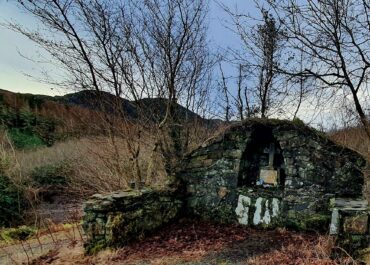Graveyard, Clonbeg Glebe, Co. Donegal
In the quiet townland of Clonbeg Glebe, County Donegal, the ruins of a 17th-century church stand as a testament to centuries of religious change in Ireland.
Graveyard, Clonbeg Glebe, Co. Donegal
This modest structure, once mistakenly identified by historian Bigger in 1909 as the site of the Third Order Regular foundation of Ballymacswiney, actually served as a chapel of ease to Clondahorky parish. The church continued to serve its community until 1752, when a new church was constructed at Ballymore, leading to the gradual abandonment of this older site.
The building’s 17th-century origins are confirmed by its architectural features, particularly its window forms and overall plan. A memorial stone dated 1679, which was recorded as being attached to the inner face of the south wall, provides concrete evidence that the church was actively in use during this period. Today, only fragments of the original structure remain; the northern wall has been largely overtaken by the later graveyard wall, which now overlies the original stonework and supersedes it at the northeast corner.
The site maintains its sacred character through the overgrown graveyard that surrounds the church ruins. This burial ground, though somewhat neglected, continues to mark the spot where generations of local families worshipped and were laid to rest, creating a layered history that spans from the 1600s through to the mid-18th century abandonment of the church itself.


